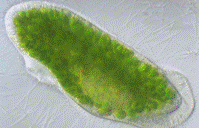Biological Sciences, School of

School of Biological Sciences: Faculty Publications
Document Type
Article
Date of this Version
8-2010
Citation
Bliss, Powers & Brassil in ECOSPHERE (August/September 2010) 1(2/3).
Abstract
Little is known about the effect of diversity surrounding a focal plant species on the belowground community under that species. At least two alternative hypotheses exist. First, studies involving a range of ecosystems and taxonomic groups have shown that changes in diversity in one group of species can promote diversity in other groups. Alternatively, many studies in soil ecology have shown that belowground communities are strongly determined by the dominant aboveground species. To better understand the role of aboveground diversity on belowground communities, we examined soil nematode communities directly under Panicum virgatum (switchgrass) in areas of high and low surrounding plant diversity. We found that soil nematode diversity under switchgrass in areas of high plant diversity (native prairies) was not significantly different from soil nematode diversity under switchgrass in areas of extremely low plant diversity (switchgrass monocultures), indicating that an agricultural monoculture can maintain high levels of belowground diversity on a plant scale. However, reduced plant diversity surrounding focal switchgrass plants resulted in a compositional shift in the belowground community toward fewer herbivorous nematodes. This evidence for the influence of surrounding diversity on belowground communities under a focal plant species is a major shift in perspective from the conventional view on belowground community ecology. Furthermore, the work has broad implications for ecological perspectives on agricultural systems.


Comments
Copyright 2010, Ecological Society of America. Used by permission.